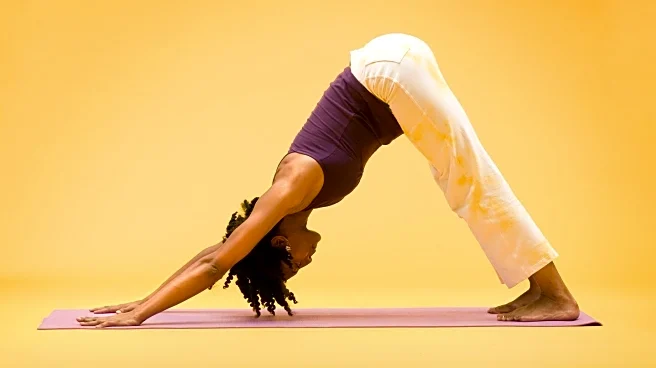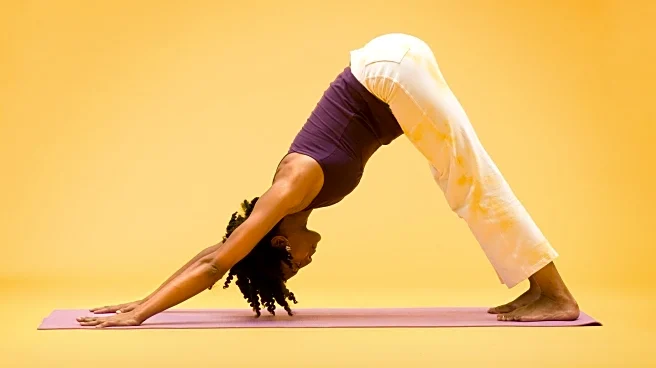What's Happening?
Valerie Lucas, a yoga teacher at YogaSix, has shared a short yoga flow designed to help individuals experiencing low energy levels. Lucas emphasizes the importance of recognizing the type of tiredness one is experiencing, whether it is physical or emotional. For those feeling physically tired, engaging in intentional movement through yoga can help boost energy and alleviate sluggishness. The flow includes transitions between plank pose and downward-facing dog, sprinters, and flying warrior to Shiva squat, aimed at building strength, mobility, balance, focus, and endurance. Lucas also highlights the practice of ahimsa, or self-compassion, for those who are deeply exhausted or emotionally drained, suggesting restorative activities like breathing exercises or meditation.
Why It's Important?
The approach advocated by Lucas underscores the significance of understanding one's body and its needs, particularly in managing energy levels and overall well-being. Yoga, as a gentle form of exercise, offers a way to rejuvenate both physically and mentally without overexertion. This is particularly relevant in today's fast-paced society where individuals often face burnout and stress. By promoting self-awareness and self-care, Lucas's method can contribute to improved mental health and physical vitality, offering a sustainable way to cope with fatigue. This approach may benefit those in high-stress environments, such as corporate settings, where maintaining energy and focus is crucial.
What's Next?
Individuals interested in incorporating yoga into their routine may explore various flows and practices that align with their energy levels and personal needs. Yoga studios and instructors might see increased interest in classes focused on energy management and restorative practices. As awareness grows, there could be a broader adoption of yoga as a tool for managing stress and enhancing well-being, potentially influencing workplace wellness programs and personal health strategies.
Beyond the Headlines
Lucas's emphasis on self-compassion and understanding one's body reflects broader cultural shifts towards mindfulness and holistic health practices. This trend aligns with increasing interest in mental health and wellness, suggesting a potential rise in demand for yoga and similar practices. The integration of yoga into daily routines could lead to long-term benefits, including reduced healthcare costs and improved quality of life.











